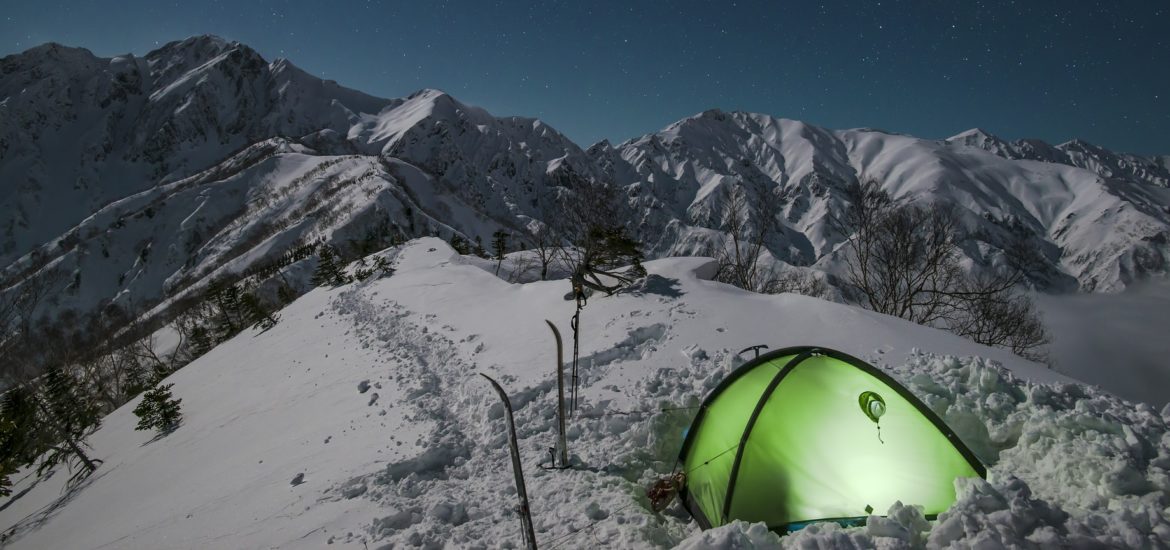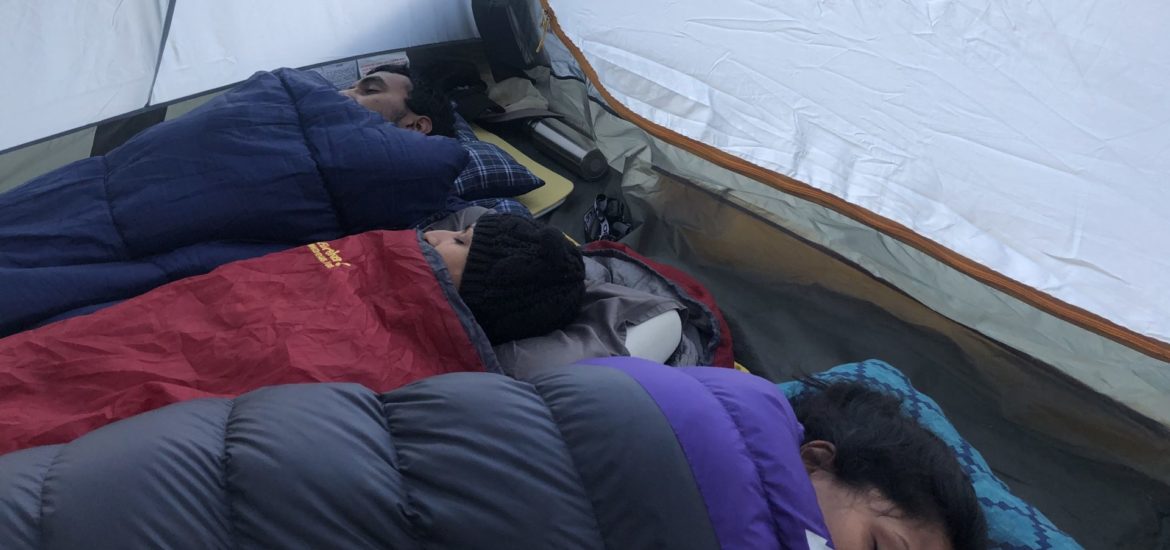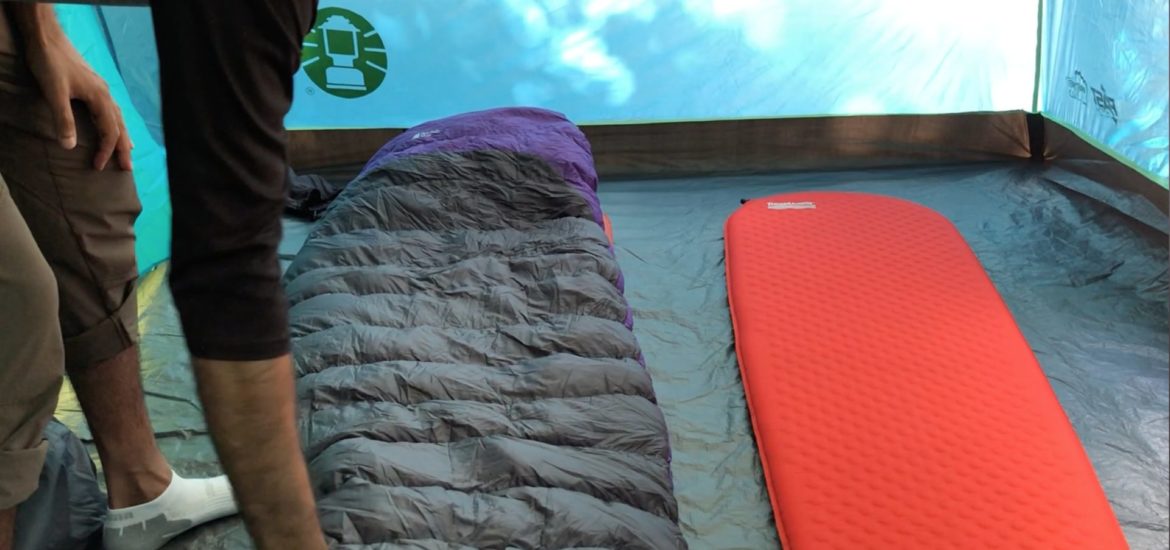The paper thin fabric that shelters you at night can be a perplexing and seemingly magical material that in theory shouldn’t keep you warm and dry.
We’ve all spent nights where the outdoors boasts a significant difference to what you feel inside of the tent when headed off to bed. So how is that a tent actually keeps you warm?
While it isn’t magic – the science behind it is incredible! There’s years of engineering that has finally gotten the world to a point where tents are lightweight, warm, and waterproof.
It can be a complicated thing to understand, but here, we’re going to go over the simple ways that a tent keeps you warm.
Article Contents:
3 Ways a Tent Keeps You Warm

The next time you’re out in a torrential rainstorm or blistering blizzard, you’ll be able to point the following 3 way that your tent is working with you while the outdoors is working against you!
1. Traps Air
One of the main ways that tents keep you warm is by trapping all of the air in one place and keeping it there. The air that becomes just as much a resident of the tent as you are serves to keep you warm throughout the night.
While your tent isn’t filled with 800 fill down, air is still a great insulator.
- The heat from your body warms the stagnant air up and it holds onto that heat impressively well
The less air flow, the more heat will stay inside of your tent. It’s all about balance between moisture loss and heat retention.
2. Deflects Wind
Tents effectively get rid of the windchill that you will often feel any time you’re outside.
Wind causes convective heat loss, essentially meaning the wind takes away warmer layer of air around your body and constantly replaces it with colder air.
Inside a quality tent, you don’t need to worry about convective heat loss. A good tent will be sealed up enough to not let any drafts in and will deflect the wind around the tent, not just take it all on and turn into a sail.
Windchill
Windchill is one of the quickest ways to lose heat that your body produces. This is why the weather will often show the windchill number, what it feels like outside, rather than the actual temperature.
The difference can be huge and tents can provide an opportunity to sleep in the warmer temperature.
3. Keeps Sleeping Bag Dry
Wet gear in general is bad news when you’re trying to stay warm. A wet sleeping bag is every camper’s worst nightmare.
A dry sleeping bag isn’t just something to look forward to throughout the day. It effectively keeps you alive throughout the night, often to extremely low temperatures.
Once that bag is wet, it can’t do its job nearly as effectively. When a sleeping bag gets wet, the internal fibres can no longer trap air that keeps you warm. This is bad news.
Tents work to keep the wind and water away from you, meaning a dry sleeping bag and a much warmer, happier, night.
Are Single-walled or Double-walled Tents Warmer?

This question is a bit tricky to give a single answer to, as it can definitely depend on what environment you’re in. I go into much greater detail about single-walled and double-walled tents here, which can give a more comprehensive answer.
In short, single-walled tents were made for extreme environments that you find while mountaineering and summiting peaks. The single-wall helps to trap heat more effectively, but can also cause condensation build-up.
If the question needs to be answered, single-walled tents are, in general, warmer than their counterparts.
Extra Ways to Trap heat and Stay Warm in a Tent
You can simply set up a tent and go to sleep and it will be warmer than sleeping outside without one. That being said, there are also a lot of ways that you can stay even warmer while inside a tent.
With these small hacks, you can head out into more extreme environments but still sleep like a baby at night.

Keep All Vents Closed
Tent vents are great for getting rid of any moisture that builds up, but they can also get rid of a lot of heat that you worked hard to keep inside. If it’s a dry, but cold night, you can close all the vents and trap even more heat.
Set Up Your Tent in a Low-Wind Area
Yes, tents still block the wind and keep you warmer because of it, but that doesn’t mean tents are invincible and completely immune to convective heat loss.
You’ll still lose some heat if it’s extremely windy, so setting up in a low-wind area will help to keep all of the warmth with you, not down the way.
Set Up Your Tent in Direct Sunlight
If you’re lucky to have a sunny spot to camp in, put your tent right in the middle of that sunshine and reap the benefits.
Just like in a greenhouse, the tent will warm up with the greenhouse effect and trap the warmth inside of it.
That way, you can grow just like someone’s plants in a cozy greenhouse next door.
Drape a Tarp Over Your Tent
This method is simply another way to add a layer of insulation that will help to trap more air and prevent further heat loss from the wind.
Partially Fill the Gap Between Rain-Fly and Ground
When you stake out the rain fly, there’s a bit of space where the ground is exposed. This ground will put off cold air and suck in the warmth.
If you can fill this gap and cover the ground, there will be less exposed ground to suck the heat up when you’re sleeping in a double-wall tent.
Use a Sleeping Bag Liner
Sleeping bag liners are great for multiple reasons. They add a great amount of warmth and they are easier to clean than a sleeping bag.
They help keep dirt away from the inside of the bag, and a clean sleeping bag is a warm one.
There’s many sleeping bag liner options to choose from. This sleeping bag liner on Amazon is a low-cost, high performance option for most campers looking to add a little extra warmth at night!
Use a High R-value Sleeping Pad to Reduce Heat Loss to Ground

R-values are how different materials are rated in regards to the amount of heat they will allow to pass through them, and at what rate. A higher R-value essentially means “warmer”.
Get one of the best sleeping pads that will help you keep your body heat, rather than get it soaked up by the ground.
This article contains affiliate links, which help support this blog at no cost to you!
